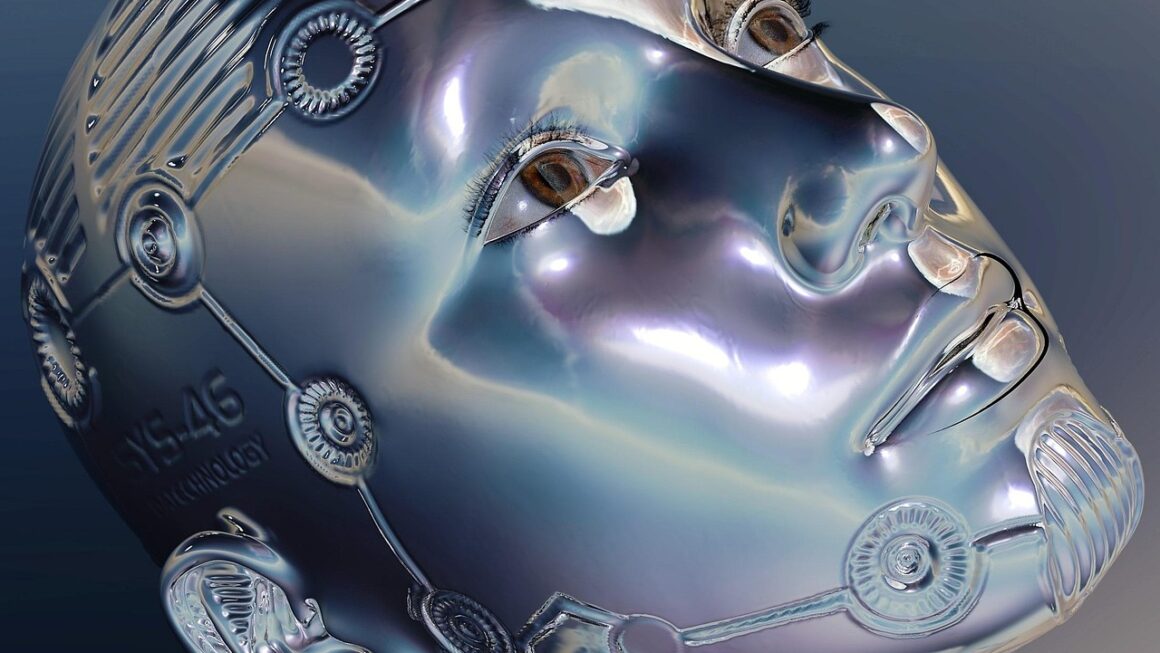Imagine a world where tasks, both mundane and complex, are handled seamlessly by machines without constant human intervention. This isn’t just science fiction; it’s the burgeoning reality of autonomous systems. From self-driving cars navigating busy city streets to sophisticated algorithms managing intricate supply chains, these systems are rapidly transforming industries and reshaping our daily lives. Let’s delve into the world of autonomous systems, exploring their capabilities, applications, and the future they are building.
Understanding Autonomous Systems
Defining Autonomy
At its core, autonomy refers to the ability of a system to perform tasks without explicit human control. This involves a complex interplay of sensors, algorithms, and actuators that allow the system to perceive its environment, make decisions, and execute actions to achieve a defined goal. It’s crucial to distinguish between automation and autonomy. Automation follows pre-programmed instructions, while autonomy involves adaptation and independent decision-making in dynamic environments.
- Automation: Following pre-defined instructions (e.g., an automated assembly line).
- Autonomy: Making decisions based on perceived environmental conditions (e.g., a self-driving car avoiding obstacles).
Levels of Autonomy
Autonomy exists on a spectrum, often categorized into levels ranging from 0 (no automation) to 5 (full automation). The Society of Automotive Engineers (SAE) defines these levels, particularly relevant for the automotive industry, but the concept extends to other autonomous systems as well.
- Level 0: No Automation: The driver (or operator) performs all driving tasks.
- Level 1: Driver Assistance: The system provides assistance with a single driving task (e.g., adaptive cruise control).
- Level 2: Partial Automation: The system can control both steering and acceleration/deceleration under certain conditions (e.g., Tesla Autopilot with driver supervision).
- Level 3: Conditional Automation: The system can perform all driving tasks under specific circumstances, but the driver must be ready to intervene when prompted.
- Level 4: High Automation: The system can perform all driving tasks in certain environments and conditions without driver intervention.
- Level 5: Full Automation: The system can perform all driving tasks in all conditions without any human intervention.
Key Components of Autonomous Systems
Building an autonomous system requires a confluence of several key components:
- Sensors: These devices gather data about the environment. Examples include cameras, LiDAR, radar, GPS, and inertial measurement units (IMUs).
- Perception Algorithms: These algorithms process sensor data to create a representation of the surrounding world. This involves object detection, tracking, and scene understanding.
- Decision-Making Algorithms: Based on the perceived environment, these algorithms determine the best course of action. This often involves planning, pathfinding, and risk assessment.
- Actuators: These components execute the decisions made by the system. Examples include motors, steering mechanisms, and brakes.
- Control Systems: Control systems ensure that the actuators execute commands accurately and efficiently.
Applications Across Industries
Autonomous Vehicles
Autonomous vehicles are perhaps the most visible application of autonomous systems. They promise to revolutionize transportation by increasing safety, reducing traffic congestion, and improving accessibility. Major players like Tesla, Waymo, and Cruise are heavily invested in developing and deploying autonomous vehicles.
- Benefits: Reduced accidents, increased efficiency, improved accessibility for people with disabilities.
- Challenges: Ensuring safety in complex and unpredictable environments, addressing ethical dilemmas, and navigating regulatory hurdles.
Robotics and Manufacturing
Robots are increasingly used in manufacturing to automate tasks such as welding, painting, and assembly. Autonomous robots can adapt to changing conditions and work collaboratively with humans, improving efficiency and reducing costs. Companies like ABB and Fanuc are leaders in this field.
- Benefits: Increased productivity, reduced labor costs, improved safety in hazardous environments.
- Example: Collaborative robots (cobots) working alongside humans in a factory, performing repetitive tasks.
Logistics and Supply Chain
Autonomous systems are transforming logistics and supply chain management. Self-driving trucks, drones, and automated warehouses are streamlining operations and improving efficiency. Companies like Amazon and FedEx are investing heavily in these technologies.
- Benefits: Faster delivery times, reduced transportation costs, improved inventory management.
- Example: Amazon using autonomous robots in its warehouses to sort and move packages.
Agriculture
Autonomous systems are being used in agriculture to automate tasks such as planting, harvesting, and spraying crops. This can improve efficiency, reduce labor costs, and increase yields. Companies like John Deere and Trimble are developing autonomous agricultural equipment.
- Benefits: Increased yields, reduced water and fertilizer usage, improved efficiency.
- Example: Autonomous tractors that can plant and harvest crops without human intervention.
Healthcare
In healthcare, autonomous systems are being used for tasks such as surgery, drug delivery, and patient monitoring. This can improve precision, reduce errors, and free up healthcare professionals to focus on more complex tasks.
- Benefits: Improved precision in surgery, reduced risk of infection, more efficient patient monitoring.
- Example: Robotic surgery systems that allow surgeons to perform complex procedures with greater accuracy and control.
The Role of Artificial Intelligence
Machine Learning
Machine learning is a critical component of many autonomous systems. It allows these systems to learn from data and improve their performance over time. Deep learning, a subfield of machine learning, is particularly useful for tasks such as image recognition and natural language processing.
- Supervised Learning: Training a model on labeled data to predict outcomes (e.g., classifying objects in an image).
- Unsupervised Learning: Discovering patterns in unlabeled data (e.g., clustering customers based on their purchasing behavior).
- Reinforcement Learning: Training an agent to make decisions in an environment to maximize a reward (e.g., training a robot to walk).
Computer Vision
Computer vision enables autonomous systems to “see” and interpret the world around them. This involves using cameras and algorithms to identify objects, track their movements, and understand the scene.
- Object Detection: Identifying and locating objects in an image or video (e.g., detecting pedestrians and vehicles).
- Image Segmentation: Dividing an image into regions based on their characteristics (e.g., separating the sky from the ground).
- Facial Recognition: Identifying individuals based on their facial features.
Natural Language Processing
Natural language processing (NLP) allows autonomous systems to understand and respond to human language. This is particularly useful for applications such as chatbots and voice assistants.
- Natural Language Understanding (NLU): Interpreting the meaning of human language.
- Natural Language Generation (NLG): Generating human-like text.
- Sentiment Analysis: Determining the emotional tone of a text.
Challenges and Ethical Considerations
Safety and Reliability
Ensuring the safety and reliability of autonomous systems is paramount. These systems must be able to operate safely in a wide range of conditions and handle unexpected events.
- Testing and Validation: Rigorous testing and validation are essential to ensure that autonomous systems are safe and reliable.
- Redundancy: Building redundancy into the system can help to mitigate the risk of failure.
- Fail-Safe Mechanisms: Implementing fail-safe mechanisms can prevent catastrophic outcomes in the event of a system malfunction.
Ethical Dilemmas
Autonomous systems raise a number of ethical dilemmas. For example, how should a self-driving car be programmed to respond in the event of an unavoidable accident? Who is responsible when an autonomous system makes a mistake?
- The Trolley Problem: A classic thought experiment that explores the ethical dilemmas of autonomous systems.
- Accountability: Determining who is responsible for the actions of an autonomous system.
- Bias: Ensuring that autonomous systems are not biased against certain groups of people.
Job Displacement
The increasing use of autonomous systems could lead to job displacement in certain industries. It’s important to consider the social and economic implications of this trend and to develop strategies to mitigate its negative effects.
- Retraining and Upskilling: Investing in retraining and upskilling programs to help workers adapt to the changing job market.
- Social Safety Nets: Strengthening social safety nets to provide support for workers who are displaced by automation.
- Universal Basic Income: Exploring the possibility of a universal basic income to provide a basic level of financial security for all citizens.
The Future of Autonomous Systems
Increased Adoption
We can expect to see increased adoption of autonomous systems across a wide range of industries in the coming years. As the technology matures and costs decrease, these systems will become more accessible and affordable.
- Widespread Use in Transportation: Self-driving cars, trucks, and drones will become increasingly common.
- Automation of Repetitive Tasks: Autonomous robots will automate many repetitive tasks in manufacturing, logistics, and agriculture.
- AI-Powered Decision Making: AI will be used to make increasingly complex decisions in a variety of fields.
Advancements in Technology
We can also expect to see significant advancements in the underlying technologies that power autonomous systems. These advancements will lead to more capable, reliable, and efficient systems.
- Improved Sensors: Sensors will become more accurate, reliable, and affordable.
- More Powerful Algorithms: Algorithms will become more efficient and capable of handling complex tasks.
- Greater Integration with the Internet of Things (IoT): Autonomous systems will be increasingly integrated with the IoT, enabling them to collect and share data more effectively.
Regulatory Frameworks
As autonomous systems become more prevalent, governments will need to develop regulatory frameworks to ensure their safe and responsible use. These frameworks will need to address issues such as liability, privacy, and security.
- Safety Standards: Establishing safety standards for autonomous systems to ensure that they are safe to operate.
- Privacy Regulations: Protecting the privacy of individuals who interact with autonomous systems.
- Cybersecurity Measures: Implementing cybersecurity measures to protect autonomous systems from hacking and cyberattacks.
Conclusion
Autonomous systems represent a paradigm shift in how we interact with technology and the world around us. While challenges and ethical considerations remain, the potential benefits – increased efficiency, improved safety, and enhanced accessibility – are immense. As the technology continues to evolve and regulatory frameworks are established, we can anticipate a future where autonomous systems play an increasingly central role in our lives, transforming industries and creating new opportunities. The key lies in responsible development and deployment, ensuring that these systems serve humanity’s best interests.




